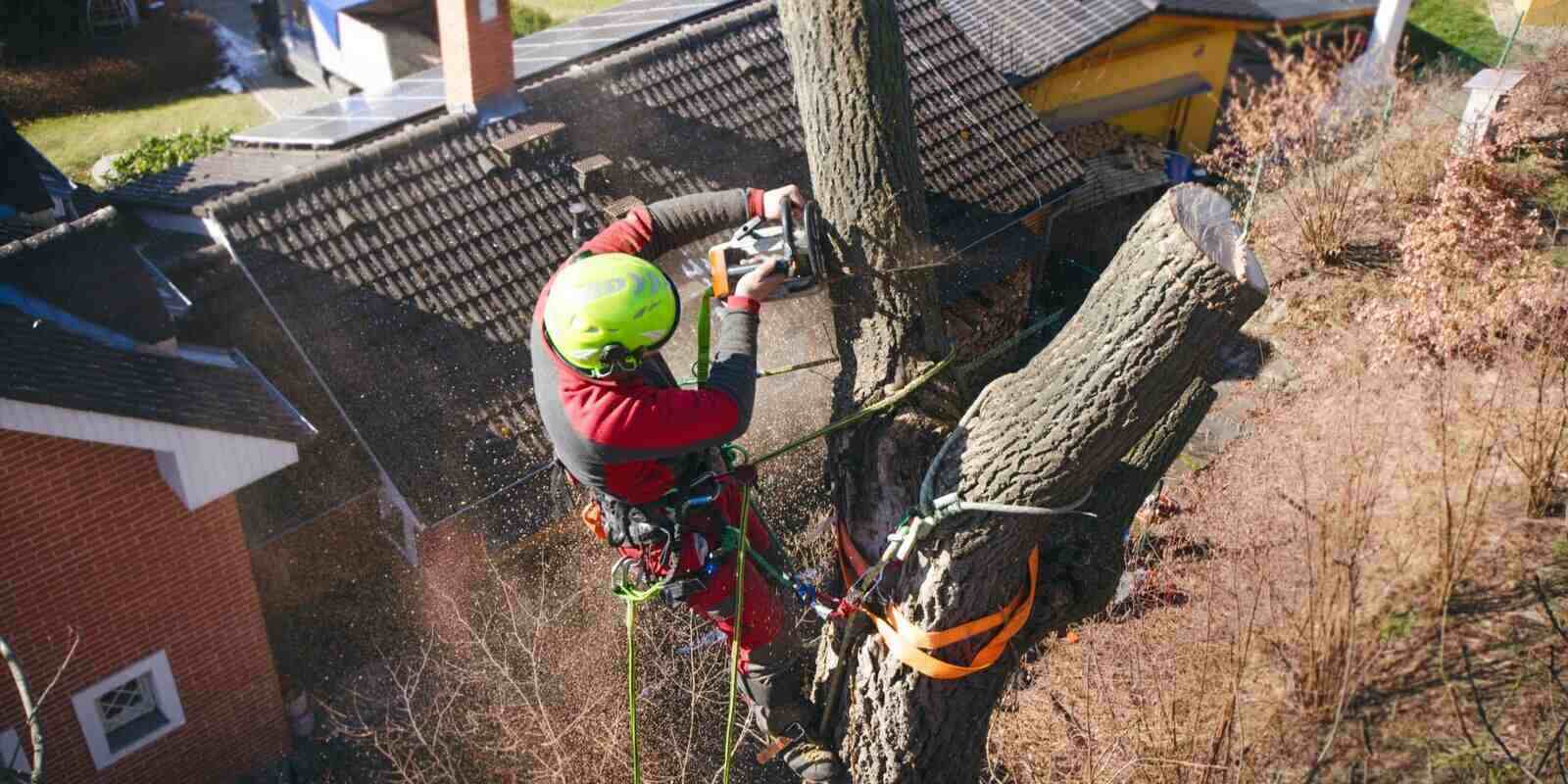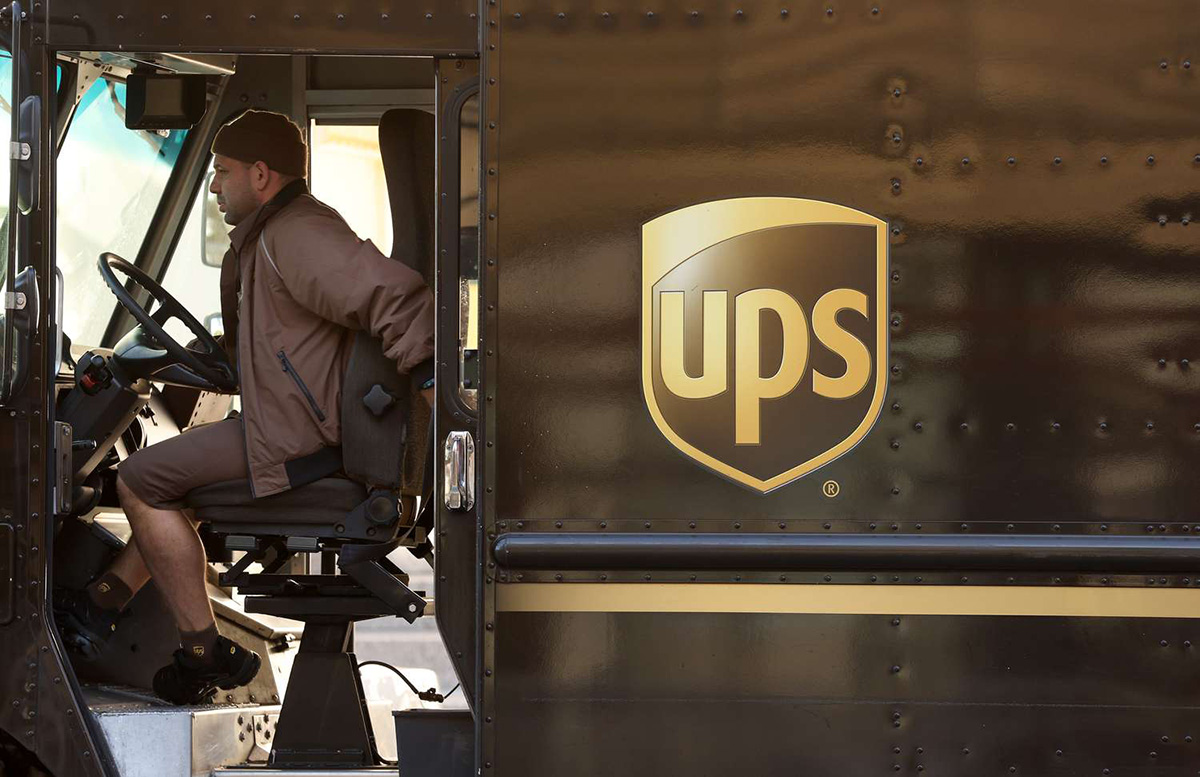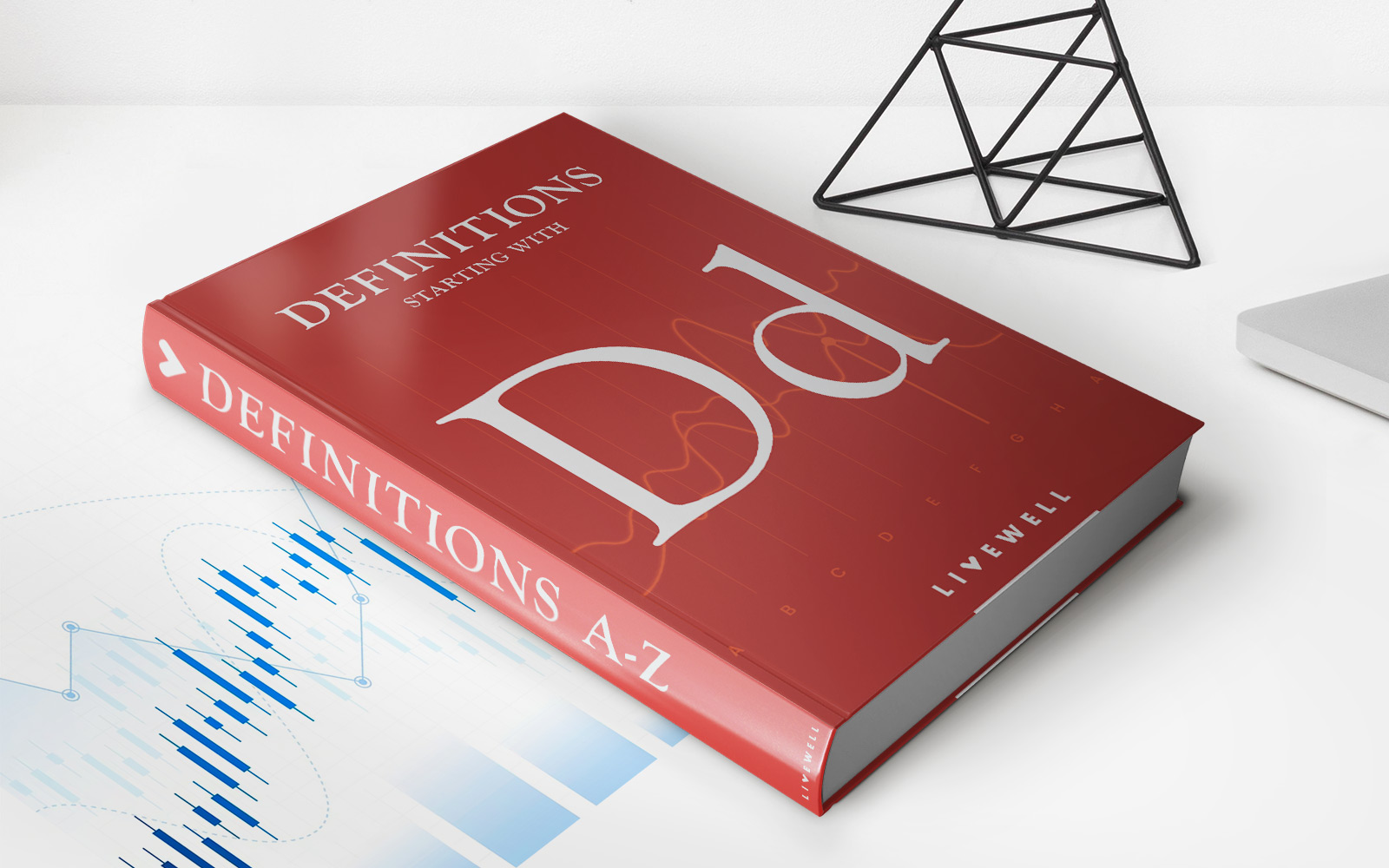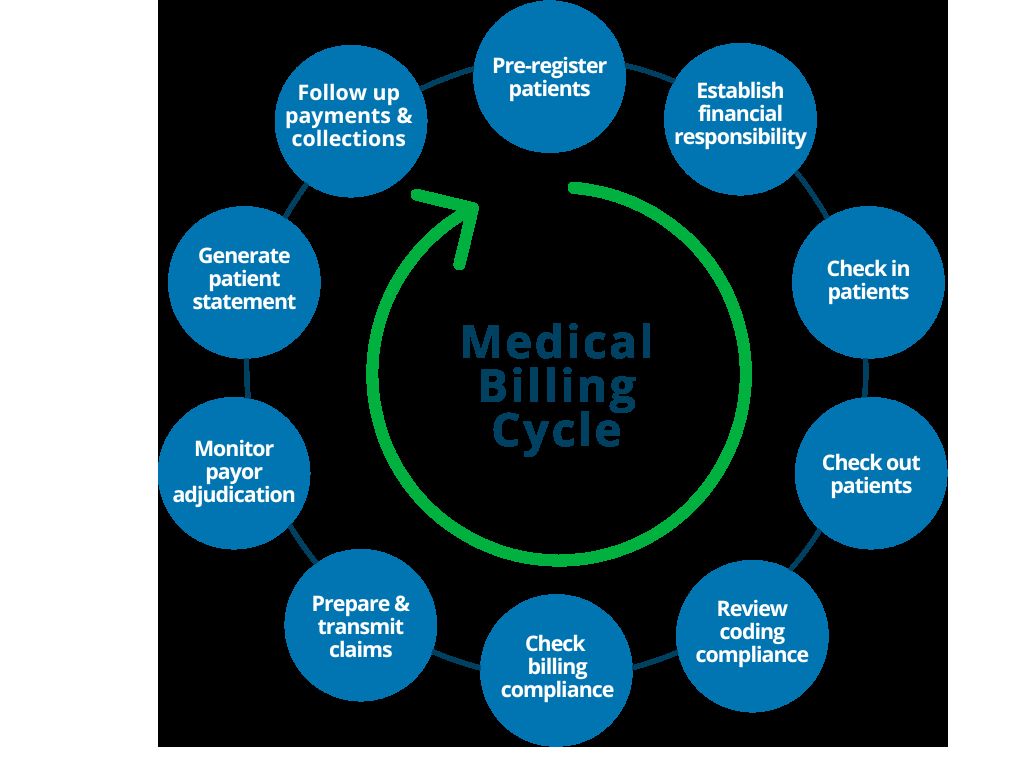

Finance
How Much Does Arborist Insurance Cost?
Published: November 10, 2023
Get a quote for arborist insurance and find out how much it costs. Protect your finances with comprehensive coverage for your tree care business.
(Many of the links in this article redirect to a specific reviewed product. Your purchase of these products through affiliate links helps to generate commission for LiveWell, at no extra cost. Learn more)
Table of Contents
Introduction
Arborists play a vital role in maintaining the health and aesthetics of trees. Whether they are trimming branches, removing trees, or diagnosing and treating diseases, arborists face unique risks in their line of work. That’s where arborist insurance comes into play. Arborist insurance provides crucial coverage to protect arborists from potential financial losses due to accidents, property damage, or liability claims.
But how much does arborist insurance cost? The answer to this question depends on several factors, including the type and scope of coverage, the location of the arborist business, and the level of risk involved in the work. In this article, we will delve into the factors that affect arborist insurance cost, explore the various types of coverage available, and share some tips for finding the right insurance provider.
Whether you’re a seasoned arborist or just starting out in the field, understanding the cost and importance of arborist insurance is crucial for protecting your business and clients. So, let’s dive in and learn all about arborist insurance and how much it may cost.
What is Arborist Insurance?
Arborist insurance is a specific type of insurance coverage designed to protect arborists and their businesses from financial losses that may arise from accidents, property damage, or liability claims. It provides a safety net for arborists by covering various risks associated with their work.
As an arborist, you may encounter potential risks such as tree limb falls, damage to property or structures, injuries to yourself or others, or legal claims arising from your work. Without adequate insurance, these risks can lead to significant financial and legal burdens that could jeopardize your business.
Arborist insurance typically includes general liability insurance, which covers third-party bodily injury and property damage claims. This coverage offers protection in the event that a client or member of the public suffers an injury or property damage as a result of your work. For example, if a tree limb falls and damages a client’s car, your insurance would cover the costs of repair or replacement.
In addition to general liability insurance, arborist insurance may also include other types of coverage, such as professional liability insurance, also known as errors and omissions insurance. This coverage protects you against claims of professional negligence, mistakes, or failure to perform your arborist duties properly. For instance, if a client claims that you misdiagnosed a disease in a tree, resulting in its death, professional liability insurance would cover any legal costs or damages.
Arborist insurance can also include commercial property insurance, which protects your business’s physical assets, such as equipment, tools, and office space, against risks like fire, theft, or natural disasters. This coverage ensures that you can replace or repair your essential equipment in the event of loss or damage.
Overall, arborist insurance is essential for protecting your business and mitigating the financial risks associated with arborist work. Without proper coverage, you may be personally liable for any damages or medical expenses that occur during your operations, potentially leading to financial ruin.
Factors that Affect Arborist Insurance Cost
The cost of arborist insurance can vary widely depending on several factors. Understanding these factors can help you estimate the potential cost of coverage and make informed decisions when selecting an insurance policy. Here are some key factors that can influence the cost of arborist insurance:
- Type of coverage: The specific types of coverage you choose for your arborist insurance policy will impact the cost. General liability insurance is typically the foundation of arborist insurance and covers bodily injury and property damage claims. Additional coverage, such as professional liability or commercial property insurance, will increase the overall cost.
- Business size and revenue: The size of your arborist business, including the number of employees and annual revenue, can affect the insurance cost. Larger businesses with higher revenue may require more coverage and have higher premiums.
- Location: The geographic location of your arborist business can also impact the insurance cost. Areas with a higher risk of natural disasters, such as hurricanes or wildfires, may result in higher premiums. Additionally, the local legal landscape, including liability laws and claim history, can influence the insurance rates.
- Experience and claims history: Your professional experience as an arborist and your claims history can impact the insurance cost. Insurance providers may consider the number and severity of past claims when determining your premium. Arborists with more experience and a clean claims history are often seen as less risky, resulting in lower premiums.
- Scope of services: The scope of arborist services you offer can play a role in the insurance cost. If you specialize in high-risk services such as tree removal or work in hazardous environments, your premiums may be higher due to the increased likelihood of accidents or property damage.
- Deductible and coverage limits: The deductible and coverage limits you choose for your policy will influence the cost. A higher deductible can lower your premium, but it also means you would have to cover more of the costs in the event of a claim. Similarly, higher coverage limits may result in higher premiums.
It’s important to consider these factors when obtaining arborist insurance quotes. Working closely with an insurance provider that specializes in arborist coverage can help you navigate these variables and find the right balance between coverage and cost for your specific needs.
Types of Arborist Insurance Coverage
Arborist insurance coverage includes different types of policies that provide protection against various risks associated with the arborist profession. Understanding the different types of coverage available can help you make informed decisions when crafting your insurance policy. Here are some common types of arborist insurance coverage:
- General Liability Insurance: This is the foundation of arborist insurance and provides coverage for bodily injury and property damage claims. It protects you in the event that a third party, such as a client or a member of the public, suffers an injury or property damage as a result of your arborist activities. For example, if a branch falls and damages a parked car, your general liability insurance would cover the costs of repairs or replacement.
- Professional Liability Insurance: Also known as errors and omissions insurance, professional liability insurance protects you against claims of negligence, mistakes, or failure to perform professional duties properly. It provides coverage for claims stemming from professional errors or inaccuracies in your arborist work. For instance, if a client alleges that you misdiagnosed a disease in a tree, resulting in its death, professional liability insurance would cover the cost of any legal expenses or damages.
- Commercial Property Insurance: This coverage protects your arborist business’s physical assets, including equipment, tools, and office space, against risks like fire, theft, or natural disasters. Commercial property insurance ensures that you can replace or repair essential equipment or property in the event of loss or damage.
- Business Interruption Insurance: Business interruption insurance provides coverage for income loss and ongoing expenses if your arborist business is temporarily unable to operate due to a covered event, such as property damage or a natural disaster. It helps you cover expenses like payroll, rent, and utilities during the recovery period.
- Workers’ Compensation Insurance: If you have employees, workers’ compensation insurance is essential. It provides coverage for medical expenses, lost wages, and rehabilitation costs if your employees are injured or become ill while working for your arborist business. Workers’ compensation insurance ensures that your employees are protected and that your business is shielded from potential lawsuits.
- Commercial Auto Insurance: If you use vehicles for your arborist business, commercial auto insurance is crucial. It covers liability and physical damage to vehicles used for business purposes. Whether you have a single work truck or a fleet of vehicles, this coverage protects against accidents, property damage, and other vehicle-related incidents.
These are just a few examples of the types of arborist insurance coverage available. The specific coverage you need will depend on your business’s size, services offered, and level of risk. Working with an experienced insurance provider can help you customize your policy to meet your unique needs and ensure comprehensive coverage.
Average Cost of Arborist Insurance
The cost of arborist insurance can vary significantly depending on several factors, including the type and scope of coverage, the size of your business, your location, and your claims history. While it’s challenging to provide an exact average cost, we can give you a general idea of what to expect when seeking arborist insurance.
On average, arborist insurance costs can range from $500 to $2,500 per year. This estimate typically includes general liability insurance, which is the foundation coverage for arborists. The overall cost will increase if you choose to add additional types of coverage, such as professional liability insurance, commercial property insurance, or workers’ compensation insurance.
It’s important to note that this average cost is just a starting point, and your actual premiums may be higher or lower based on various factors. The size of your business and annual revenue will impact the cost, as larger businesses with more employees and higher revenue generally require more coverage and may have higher premiums.
Location is another significant factor influencing the cost of arborist insurance. Areas with a higher risk of natural disasters or a higher rate of liability claims may lead to higher premiums. Additionally, local regulations and legal landscapes can affect insurance rates.
Your claims history and level of experience as an arborist can also impact the cost. Insurance providers typically consider the number and severity of past claims when determining premiums. If you have a clean claims history or a long track record in the field, you may qualify for lower rates.
It’s crucial to remember that while the cost of arborist insurance may seem significant, it provides vital protection for your business. The financial consequences of an accident, property damage, or liability claim can be far more costly than the annual premiums. Having comprehensive coverage in place ensures that you can continue operating your business with peace of mind.
To get an accurate estimate of the cost of arborist insurance for your specific business, it’s recommended to contact insurance providers specializing in arborist coverage. They can assess your unique needs and provide you with personalized quotes tailored to your requirements.
Ways to Save on Arborist Insurance
While arborist insurance is essential for protecting your business, you may be looking for ways to reduce the cost of coverage. Here are some strategies that can help you save on arborist insurance:
- Shop around and compare quotes: Don’t settle for the first insurance provider you come across. Instead, gather quotes from multiple insurance companies that specialize in arborist coverage. Compare the coverage options, deductibles, and premiums to find the most competitive rates.
- Bundle your policies: Consider bundling your arborist insurance policies with the same insurance provider. Many insurance companies offer discounts when you combine multiple policies, such as general liability, professional liability, and commercial property insurance.
- Assess your coverage needs: Take a close look at your coverage requirements. Ensure that you have the appropriate types and levels of coverage based on the specific risks of your arborist business. Avoid overinsuring by eliminating any redundant or unnecessary coverage options.
- Implement risk management practices: Insurance providers may offer premium discounts if you have risk management practices in place. Show proof of safety training programs, regular equipment maintenance, and proper safety protocols to demonstrate your commitment to minimizing risks.
- Ensure accurate classification: Insurance providers categorize businesses into different risk classes. Make sure your arborist business is accurately classified to avoid being overcharged for higher-risk categories. Provide detailed information about the services you offer and any safety measures you have in place.
- Maintain a claims-free record: A clean claims history can work in your favor when it comes to insurance premiums. Implement proper safety protocols and focus on preventing accidents and claims. The longer you can maintain a claims-free record, the better chance you have of securing lower insurance rates.
- Consider higher deductibles: Increasing the deductible on your arborist insurance policy can lower your premiums. However, be sure to evaluate the financial implications and make sure you can comfortably handle the deductible amount in the event of a claim.
- Review your coverage annually: As your arborist business evolves, it’s important to review your insurance coverage annually. Ensure that your policy aligns with your current needs and adjust coverage as necessary. Regularly reassessing your coverage can help you avoid paying for unnecessary or insufficient coverage.
Taking these steps can help you save money on arborist insurance without compromising on the essential protection your business needs. Remember to work closely with an insurance provider that understands the arborist industry and can help you navigate the coverage options and find the most cost-effective solutions.
Finding the Right Arborist Insurance Provider
When it comes to arborist insurance, finding the right insurance provider is crucial. You want to work with a company that understands the unique risks and requirements of the arborist industry. Here are some key considerations to help you find the right arborist insurance provider:
- Specialization: Look for insurance providers that specialize in arborist insurance. They will have a deep understanding of the specific risks you face as an arborist and can offer tailored coverage options to meet your needs. These specialists will also be familiar with industry-specific terminology, regulations, and claims scenarios.
- Reputation and Financial Stability: Research the reputation and financial stability of potential insurance providers. Look for companies with a solid track record and positive reviews from arborists and other customers. Financial stability is important to ensure that the insurance provider has the financial capacity to pay claims when needed.
- Coverage Options: Evaluate the range of coverage options offered by each insurer. Ensure that they can provide the specific types of coverage you need, such as general liability, professional liability, commercial property, or workers’ compensation insurance. A provider with a wide range of options can offer flexibility as your business grows.
- Claims Process and Support: Understand the claims process and the level of support provided by each insurer. A responsive and efficient claims process can make a significant difference in minimizing business disruptions and getting the compensation you deserve. Read reviews or seek recommendations from other arborists regarding the insurer’s claims handling.
- Cost and Discounts: Obtain detailed quotes from multiple insurers to compare costs and coverage. Look for any applicable discounts, such as bundling policies or discounts for safety measures or certifications. However, remember that cost should not be the sole determining factor; prioritize the coverage and service quality over the lowest price.
- Customer Service: Assess the level of customer service provided by each insurance provider. Are they responsive to your inquiries? Do they provide clear and helpful information? A reliable and accessible customer service team can provide valuable support throughout the insurance buying process and during policy terms.
- Recommendations and Referrals: Seek recommendations and referrals from other arborists, industry associations, or local business networks. Their firsthand experiences and insights can help guide your decision-making process and point you towards reputable insurance providers.
By carefully considering these factors and conducting thorough research, you can find the right arborist insurance provider that offers the coverage, support, and peace of mind you need to protect your business.
Conclusion
Arborist insurance is a crucial investment for arborists who want to protect their businesses from potential financial losses due to accidents, property damage, or liability claims. The cost of arborist insurance can vary based on factors such as the type and scope of coverage, business size, location, and claims history. However, the peace of mind and protection it provides are invaluable.
When exploring arborist insurance options, it’s important to consider the different types of coverage available, such as general liability insurance, professional liability insurance, commercial property insurance, workers’ compensation insurance, and commercial auto insurance. Understanding your specific business needs will help you choose the right coverage to mitigate potential risks.
To save on arborist insurance, take the time to shop around, compare quotes, bundle policies, and implement risk management practices. Regularly review your coverage to ensure it aligns with your current business needs and adjust as necessary. By working closely with insurance providers who specialize in arborist coverage, you can find the most cost-effective solutions without compromising on essential protection.
Lastly, finding the right arborist insurance provider is essential. Consider factors such as specialization, reputation, financial stability, coverage options, claims process and support, cost, customer service, and recommendations. By conducting thorough research and seeking referrals, you can partner with an insurer that understands the unique risks and requirements of the arborist industry.
Remember, arborist insurance is not just a financial safeguard but also a means to protect your clients, your employees, and your business’s reputation. Investing in comprehensive coverage is a proactive step towards ensuring the long-term success and sustainability of your arborist business.














